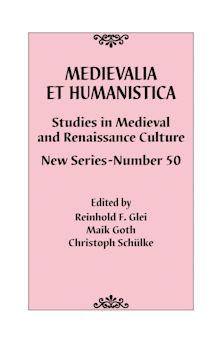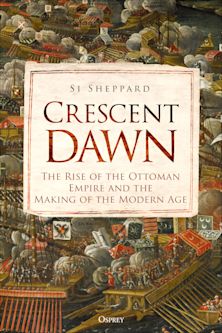- Home
- ACADEMIC
- History
- Medieval History
- Medievalia et Humanistica No. 31
Medievalia et Humanistica No. 31
Studies in Medieval and Renaissance Culture
Medievalia et Humanistica No. 31
Studies in Medieval and Renaissance Culture
This product is usually dispatched within 1 week
- Delivery and returns info
-
Free US delivery on orders $35 or over
You must sign in to add this item to your wishlist. Please sign in or create an account
Description
Since its founding in 1943, Medievalia et Humanistica has won worldwide recognition as the first scholarly publication in America to devote itself entirely to medieval and Renaissance studies. Since 1970, a new series, sponsored by the Modern Language Association of America and edited by an international board of distinguished scholars and critics, has published interdisciplinary articles. In yearly hardbound volumes, the new series publishes significant scholarship, criticism, and reviews treating all facets of medieval and Renaissance culture: history, art, literature, music, science, law, economics, and philosophy.
Volume thirty-one in the new series contains six original and refereed articles that represent a reengagement with history. They focus on a variety of topics, ranging from reception theory in Andreas Capellanus and the ideal sovereign in Christine de Pizan to peasant rebel leaders in late-medieval and early-modern Europe. Don Monson's article makes good usage of Jauss's reception theory and analyzes the third Dialogue of Book I, Chapter 6 of De Amore in a thorough and intelligent way. Important aspects of the relationship between "scientific" Latin treaties and Provençal courtly poetry are neatly demonstrated.
Karen Gross examines structural and thematic resemblances between the Aeneid and De Casibus, arguing that Anchises' "pageant of future Roman worthies" (Aen. VI) is connected to the frame structure of De casibus. The author is interested in "global similarities, not local verbal echoes," and believes that the "structure resonances" have implications for "how Boccaccio understood the interaction between history and poetry, between the living and the dead." Especially thought-provoking and original are the discussion of the motif of father/son piety and commemoration and the contrast of Virgil's fortuna in Roman history and Boccaccio's in world history.
Daisy Delogu's article on Christine de Pizan is a timely one, and also represents reengagement with history th
Table of Contents
Chapter 2 Virgilian Hauntings in Boccaccio's De casibus virorum illustrium
Chapter 3 Reinventing the Ideal Soverign in Christine de Pizan's Livre des fais et bonnes meurs du Sage roy Charles V
Chapter 4 Cupid's Wheel: Love and Fortune in The Knight's Tale
Chapter 5 Clément Marot, The Roman de la Rose, and Poetic Identity
Chapter 6 Atrocities and the Executions of Peasant Rebel Leaders in Late-Medieval and Early-Modern Europe
Product details
| Published | Sep 29 2005 |
|---|---|
| Format | Hardback |
| Edition | 1st |
| Extent | 192 |
| ISBN | 9780742549494 |
| Imprint | Rowman & Littlefield Publishers |
| Dimensions | 9 x 7 inches |
| Series | Medievalia et Humanistica Series |
| Publisher | Bloomsbury Publishing |


































